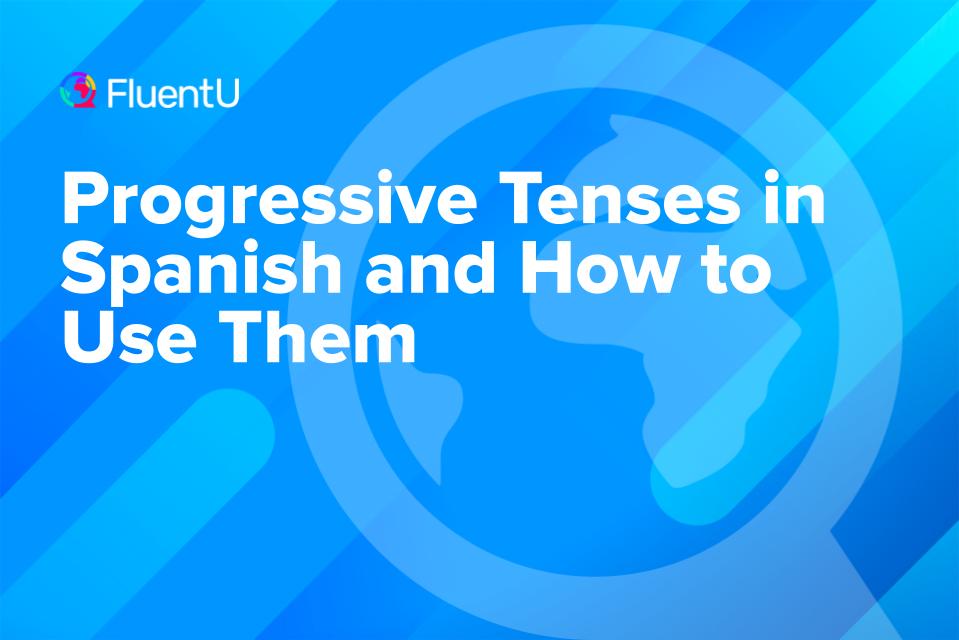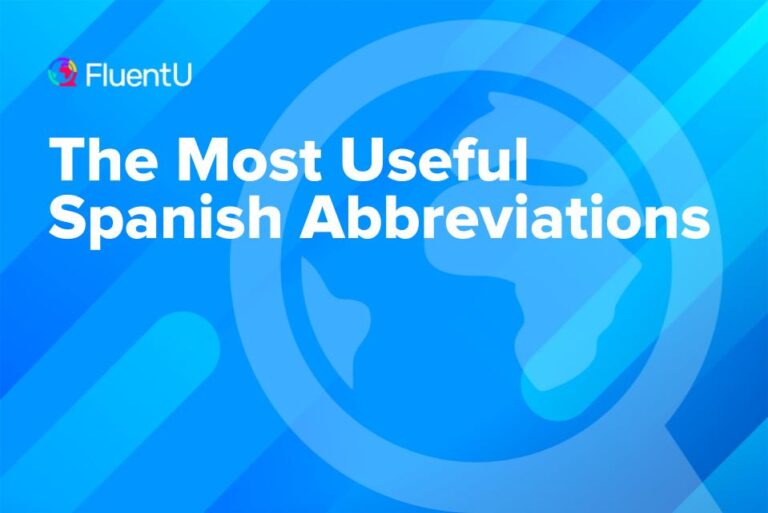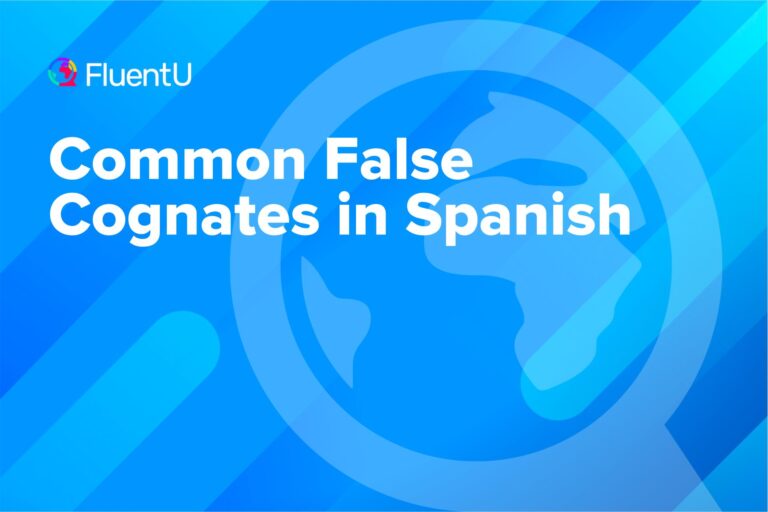Contents
- The Uses and Importance of the Spanish Progressive Tense
- Building the Progressive Tense in Spanish
- Spanish Present Progressive Tense
- Spanish Imperfect Progressive Tense
- Spanish Preterite Progressive Tense
- Spanish Future Progressive Tense
- Present Simple and Imperfect as Progressive Tenses
- And One More Thing…
Progressive Tenses in Spanish and How to Use Them

You can make your Spanish sentences more engaging just by using the progressive tense. This tense helps you explain something that was, is or will be happening (something “in progress”) in a more expressive manner.
Read on to learn how to use the Spanish progressive tense and improve your Spanish sentences.
Download: This blog post is available as a convenient and portable PDF that you can take anywhere. Click here to get a copy. (Download)
The Uses and Importance of the Spanish Progressive Tense
The progressive tense, both in English and Spanish, is the tense we use to describe actions that were, are or will be happening at some point in the past, present or future, respectively.
To be specific, in Spanish you can use…
- the present progressive to describe actions that are going on at the moment of speaking.
- the imperfect progressive to talk about actions that were ongoing at some point in the past.
- the preterite progressive to discuss ongoing past actions that have since finished or come to an end.
- the future progressive to describe actions that will be ongoing at some point in the future, or to hypothesize about what must be happening in the present.
Building the Progressive Tense in Spanish
Most importantly, you need the verb estar (to be) and a present participle, also known as a gerund and called the gerundio in Spanish.
Learning the present participle of verbs is fairly easy, because it never changes. Whether you’re talking about the past, the present or the future, its form will always be exactly the same.
To form the gerundio, just look at the ending of the infinitive. If the infinitive ends in -ar, replace that ending with -ando:
| Infinitive | Present Participle |
|---|---|
| cantar | cantando |
| llorar | llorando |
| caminar | caminando |
And if the infinitive ends in -er or -ir, replace the ending with -iendo:
| Infinitive | Present Participle |
|---|---|
| comer | comiendo |
| correr | corriendo |
| vivir | viviendo |
| conducir | conduciendo |
The verb estar is also pretty easy. Depending on the progressive tense you’re using, you just need to use the corresponding tense of estar.
Don’t worry—we’ll get into when to use each progressive tense next! But as an example, if you want to use the present progressive tense, estar should be conjugated in the present tense, as such:
| Spanish | English |
|---|---|
| Yo estoy | I am |
| Tú estás | You are |
| Él / Ella está | He / She is |
| Nosotros estamos | We are |
| Vosotros estáis / Ustedes están | You (all) are |
| Ellos / Ellas están | They are |
So, if you’re using the imperfect progressive tense, estar should be conjugated in its imperfect form; for the preterite progressive tense, conjugate estar in the preterite; and for the future progressive tense, estar should appear in its future form.
If you need the verb estar fully conjugated, just use this handy guide from 123TeachMe.
Now, let’s get into the four forms of the Spanish progressive tense.
Spanish Present Progressive Tense
As I mentioned earlier, the present progressive tense (sometimes called the present continuous) is used when talking about actions that are happening as you speak.
The greatest feature of the present progressive is that it’s used in both English and Spanish in the exact same way and for the exact same purpose.
So the only thing you need in order to master it is the present tense of the verb estar and a gerund. For example:
Estás regando las plantas. (You are watering the plants.)
Alguien está llamando a la puerta. (Someone is knocking on the door.)
Está nevando en Polonia. (It is snowing in Poland.)
Apart from describing things that are happening at the very moment you’re speaking, the present progressive is also used to talk about broader actions that are ongoing in the present, but not necessarily at this moment.
Once again, both English and Spanish share this feature. Here are some examples:
Este año estoy estudiando francés. (I am studying French this year.)
Nos estamos quedando en un hotel. (We are staying in a hotel.)
Estoy durmiendo solo esta semana. (I am sleeping alone this week.)
Spanish Imperfect Progressive Tense
The imperfect progressive tense is mainly used to describe actions that were ongoing at some point in the past.
Again, both English and Spanish use the imperfect progressive tense in the same fashion. The main difference is that in English, you have an auxiliary verb conjugated in the simple past tense, whereas in Spanish the auxiliary verb is conjugated in the imperfect tense.
To this Spanish imperfect auxiliary verb we add a present participle, which, as mentioned above, does not change.
The Spanish imperfect progressive is used in two specific contexts. First, we use it when talking about actions that were ongoing in the past.
Bear in mind that it is not important if these actions were actually completed (or not) and when. You’re referring to them when they were in process; they lasted for some time, and that’s what matters here.
For example:
Estaba cantando su canción favorita. (He was singing his favorite song.)
Me estaba bañando cuando llegó. (I was having a bath when he arrived.)
El bebé me estaba mirando a mí, no a su madre. (The baby was looking at me, not at his mother.)
(Note that in the English imperfect progressive tense, you use the past simple of “to be”—the word “was.”)
The second use of the Spanish imperfect progressive is describing broader actions that were ongoing in the past, normally during a period of time longer than just a few minutes or even a few hours.
So, you wouldn’t use it to describe taking a bath or singing a song, but something bigger. Have a look:
Ese año yo estaba estudiando polaco. (I was learning Polish that year).
You obviously were not studying Polish for 365 days without a break—the situation was ongoing because it happened throughout the year, but there was not a single, specific moment when you studied (there were many).
Here are some more examples:
En 2005 María estaba viviendo en Barcelona. (In 2005 María was living in Barcelona.)
Estaba nevando mucho para ser primavera. (It was snowing a lot considering it was spring.)
Mis vecinos se estaban poniendo muy nerviosos. (My neighbors were getting very nervous.)
Spanish Preterite Progressive Tense
The preterite progressive tense is used for an ongoing past action that has finished, stopped or come to an end.
There is no equivalent tense in English, because English has only one past progressive tense, as mentioned above. Spanish, on the other hand, has two.
If you’re learning the preterite progressive tense, I assume you already know what the preterite is and the difference between the imperfect and the preterite tenses.
Here’s a quick review: In Spanish, both the imperfect and the preterite are used when talking about actions that took place in the past. The big difference is that the imperfect is used for an ongoing action in the past, while the preterite is used to clearly express that a past action ended.
The following examples will help you out:
Mi hermana cocinaba mientras yo quitaba el polvo. (My sister was cooking while I was dusting [ongoing actions].)
La película terminó a las 7. (The movie ended at 7 pm [completed action].)
Now, when using the preterite progressive tense, the activity we’re describing came to an end at the moment we’re referring to or before, but never after.
I know, I know. I get questions from my students at this point, which is natural. Here are some answers:
- Yes, we’re dealing with the progressive tense, which means the action of the verb must be ongoing.
- Yes, we translate both the Spanish imperfect and preterite progressive tenses as the past continuous in English.
- No, they’re really not the same, and you certainly cannot use them interchangeably in Spanish.
The biggest thing to keep in mind is that the imperfect progressive emphasizes the ongoing nature of a past action, while the preterite progressive emphasizes that an ongoing past action ended.
Take this example:
Estuve cantando toda la mañana. (I was singing the whole morning.)
We have a clear end to the action—the morning ended and then the afternoon began. It doesn’t matter how many hours I was singing, where I was or what I did exactly during those hours. I sang, I finished singing. Preterite.
You can’t use the imperfect with that sentence because toda la mañana marks an end. If you have an end, you cannot use the imperfect.
So let’s compare the two:
Estuvimos limpiando de las 9 a las 11. (We were cleaning from 9 am to 11 am.)
Estábamos limpiando cuando sonó el teléfono. (We were cleaning when the telephone rang.)
In the first sentence, we were cleaning for two hours (progressive), but we finished at 11 am. The action was completed—preterite.
In the second sentence, you don’t know when we started, when we finished or if we even did finish cleaning. You only know that we were in the middle of an ongoing action when something else happened—imperfect.
Spanish Future Progressive Tense
The future progressive tense is our way to say something will be happening at some point in the future.
This tense (also known as the future continuous) is very similar in Spanish and English. In English you use the construction “will be” plus the present participle of the main verb, while in Spanish you use the future simple of estar plus the gerundio.
There are two situations where you’ll use the future progressive tense in Spanish. The first one is the same as in English. You use the future progressive to say that something will be happening or ongoing in the future.
For example:
Mañana a las 6 ya estaré desayunando. (I will already be having breakfast tomorrow at 6 am.)
Estaremos viviendo en África en un año. (We will be living in Africa in a year.)
A esta hora mañana estarán llegando a casa. (This time tomorrow they will be arriving home.)
The second use of the future progressive only appears in Spanish. You’ll use this tense to hypothesize about what must be happening in the present.
Notice that these hypotheses can always be translated in English as “must be” plus a present participle:
Estará llegando ahora. (He must be arriving now.)
Estarán estudiando. (They must be studying.)
Me estaré volviendo loco. (I must be going crazy.)
Present Simple and Imperfect as Progressive Tenses
You may already know that Spanish speakers love using the present simple tense. So it’s important to note that you can also use this tense with a present progressive meaning (i.e. for actions that are taking place at the moment of speaking).
For a native Spanish speaker, there is no difference in meaning between a sentence built in the present continuous and one built in the present simple.
Have a look (progressive first, present simple underneath):
¿Qué está pasando?
(What is happening?)
¿Qué pasa?
(What is happening?)
Estoy yendo a la escuela.
(I am going to school.)
Voy a la escuela.
(I am going to school.)
¿Qué estás haciendo?
(What are you doing?)
¿Qué haces?
(What are you doing?)
The same happens when using the imperfect progressive and the imperfect. To refer to actions that were going on at some point in the past, you can technically choose whichever form you like the most:
Iba caminando cuando ocurrió el accidente.
(He was walking when the accident happened.)
Caminaba cuando ocurrió el accidente.
(He was walking when the accident happened.)
¿Qué estabas haciendo cuando te llamé?
(What were you doing when I called you?)
¿Qué hacías cuando te llamé?
(What were you doing when I called you?)
El niño estaba jugando en el parque.
(The boy was playing in the park.)
El niño jugaba en el parque.
(The boy was playing in the park.)
Sound confusing? Have no fear! You can get the hang of the progressive tense (even in its “simple” form) with practice by reading and listening to native Spanish speakers.
For example, you might read Spanish novels or blogs to see how natives use the progressive tense within a story. Or you can watch some Spanish TV shows or movies to hear the progressive tense used in conversation.
To practice both at once, you might try a program designed specially for language learners, such as FluentU.
FluentU takes authentic videos—like music videos, movie trailers, news and inspiring talks—and turns them into personalized language learning lessons.
You can try FluentU for free for 2 weeks. Check out the website or download the iOS app or Android app.
P.S. If you decide to sign up now, you can take advantage of our current sale!

You can also get an idea of how FluentU works by watching videos on the FluentU Spanish YouTube channel. For example, this video takes a Spanish-dubbed episode of “Friends” and turns it into an in-depth Spanish lesson, where the host breaks down meaningful vocabulary, grammar, expressions and cultural context:
And once you’ve read or listened to natives, try using the Spanish progressive tense while speaking with them, too!
Now you have all the necessary tools to discuss ongoing actions at any point in time (and tell more engaging stories in the process).
Time to get out there and see what’s happening!
Download: This blog post is available as a convenient and portable PDF that you can take anywhere. Click here to get a copy. (Download)
And One More Thing…
If you've made it this far that means you probably enjoy learning Spanish with engaging material and will then love FluentU.
Other sites use scripted content. FluentU uses a natural approach that helps you ease into the Spanish language and culture over time. You’ll learn Spanish as it’s actually spoken by real people.
FluentU has a wide variety of videos, as you can see here:

FluentU brings native videos within reach with interactive transcripts. You can tap on any word to look it up instantly. Every definition has examples that have been written to help you understand how the word is used. If you see an interesting word you don’t know, you can add it to a vocab list.

Review a complete interactive transcript under the Dialogue tab, and find words and phrases listed under Vocab.

Learn all the vocabulary in any video with FluentU’s robust learning engine. Swipe left or right to see more examples of the word you’re on.

The best part is that FluentU keeps track of the vocabulary that you’re learning, and gives you extra practice with difficult words. It'll even remind you when it’s time to review what you’ve learned. Every learner has a truly personalized experience, even if they’re learning with the same video.
Start using the FluentU website on your computer or tablet or, better yet, download the FluentU app from the iTunes or Google Play store. Click here to take advantage of our current sale! (Expires at the end of this month.)







